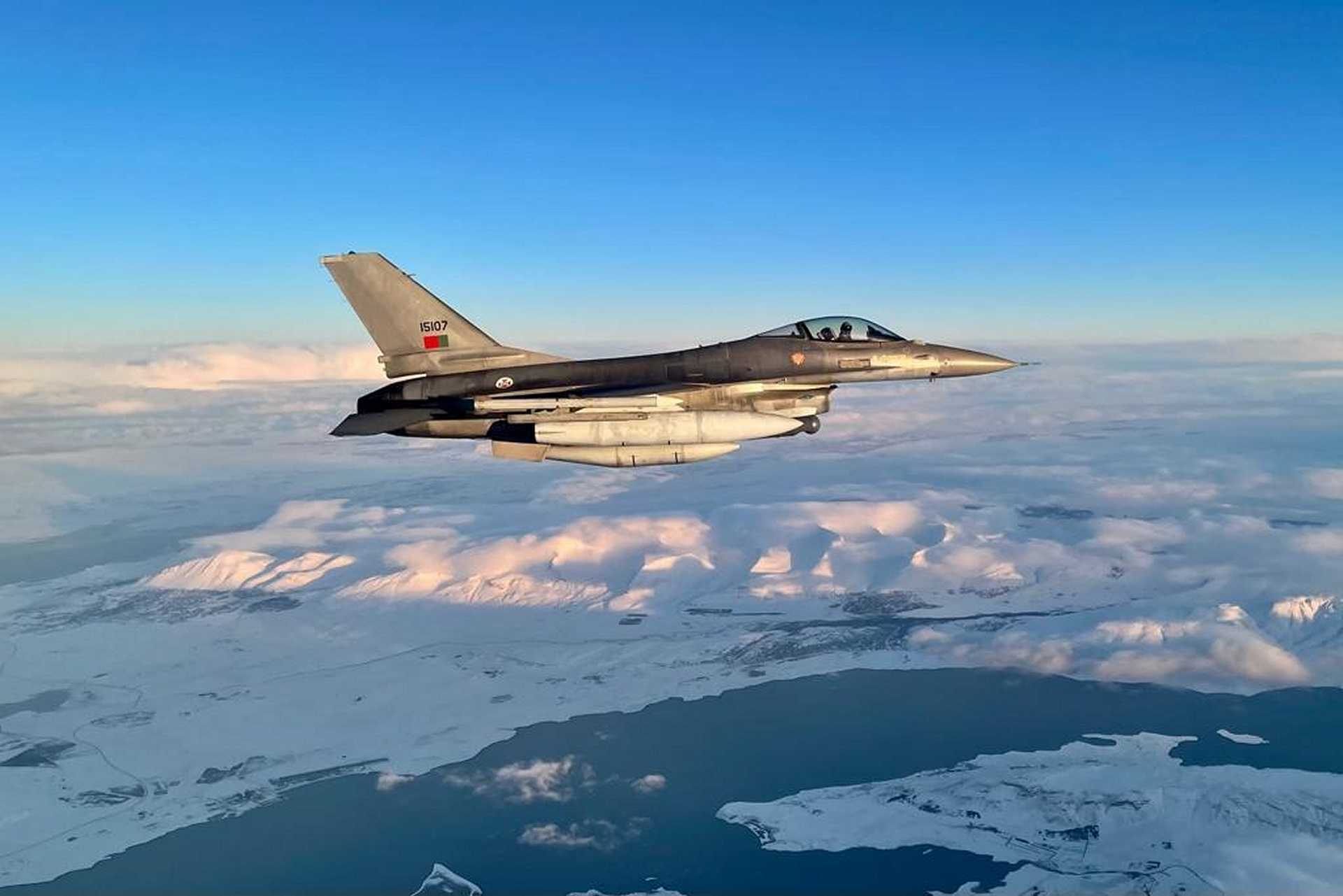Flash News: Portugal Air Force Chief Confirms U.S. F-35 as Only Fifth-Gen Fighter Jet Fit to Replace F-16s

{loadposition bannertop}
{loadposition sidebarpub}
Portugal has taken a decisive step toward modernizing its air force by affirming its intent to acquire the U.S.-built F-35 Lightning II fighter jet as the successor to its aging fleet of F-16 Fighting Falcons. The announcement, delivered by General João Cartaxo Alves, Chief of the Air Force General Staff (CEMFA), during the Portuguese National Defense Conference on April 22, 2025, marks a significant evolution in the country’s defense strategy.Follow Army Recognition on Google News at this link
Portugal’s aging F-16 Fighting Falcon, currently in service with the Portuguese Air Force, is set to be succeeded by the F-35. (Picture source: NATO)
This confirmation, made public through the Portuguese Air Force on April 23, 2025, underscores Portugal’s growing need for fifth-generation air power to address the strategic challenges posed by its geographic location and international commitments. General Alves emphasized, “It is imperative that the next air defense aircraft be of the 5th generation,” noting that “of the available aircraft, only one currently meets this requirement, the U.S. F-35.”
Portugal’s position at the intersection of Europe, Africa, and the Atlantic lends it a vital role in NATO’s southern defense axis. The Atlantic region is increasingly seen as a strategic frontier, vulnerable to new and diverse threats including cyber warfare, long-range missile attacks, and asymmetric naval incursions. By selecting the F-35, Portugal aims to secure air superiority in this volatile landscape while aligning with NATO standards and enhancing its interoperability with allied forces.
The Lockheed Martin F-35 Lightning II is the only operational fifth-generation fighter that integrates stealth, sensor fusion, electronic warfare, and network-enabled mission capabilities. These features are critical not only for traditional air-to-air combat but also for executing precision strike and intelligence-gathering missions across complex and contested environments.
Portugal currently operates 28 F-16 aircraft—24 F-16AM and 4 F-16BM models—modernized under the Mid-Life Update (MLU) program. These jets, assigned to the 201st “Falcões” and 301st “Jaguares” Squadrons at Monte Real Air Base, have served the country well since their acquisition through the Peace Atlantis I and II programs in the 1990s. However, with evolving threats and the operational limitations of fourth-generation fighters, the F-16s are nearing obsolescence in the context of high-end modern warfare.
The transition to the F-35 is part of Portugal’s broader “Air Force 5.3” modernization initiative, unveiled in November 2023. This transformation aims to create a technologically advanced, multi-domain force capable of addressing 21st-century threats by integrating manned and unmanned platforms, light attack aircraft, and robust command and control systems.
Despite General Alves’s strong endorsement, no formal procurement contract has yet been signed. Initial plans called for the acquisition of 27 F-35s at an estimated cost of €5.5 billion, a figure that includes training, support infrastructure, and logistics. In early 2025, Defense Minister Nuno Melo suggested that the government was also evaluating European alternatives, motivated by concerns about U.S. foreign policy volatility and a desire to support European defense industrial capabilities.
Nevertheless, General Alves’s remarks at the National Defense Conference suggest a reaffirmation of the F-35’s unmatched suitability for Portugal’s defense needs. The forthcoming months will likely be crucial for finalizing terms with the United States, possibly through the Foreign Military Sales (FMS) program, and securing parliamentary approval for the funding.
The integration of the F-35 into the Portuguese Air Force will significantly enhance NATO’s collective defense posture, particularly on its Atlantic front. Portugal would join a growing list of NATO countries—such as the United Kingdom, Italy, the Netherlands, Norway, and Belgium—that have adopted the F-35 to ensure seamless joint operations and deterrence in multi-theater conflicts.
Additionally, the F-35’s presence in Portugal would provide a technological uplift that benefits national security and supports maritime surveillance and quick reaction alert (QRA) missions—tasks critical to safeguarding the vast expanse of Portugal’s air and maritime space.
Portugal’s strategic choice to prioritize the F-35 represents more than a generational upgrade in aircraft; it marks a foundational shift in the doctrine, capabilities, and posture of its air force. With the Atlantic at the heart of its defense considerations, Portugal is preparing to meet the challenges of a more contested and technologically advanced battlespace.
As the procurement process progresses, the decision will likely have far-reaching impacts—not only on Portugal’s national defense but also on the operational cohesion and deterrence capacity of NATO’s southern flank. The F-35 stands poised to become the cornerstone of Portuguese air power for decades to come.

{loadposition bannertop}
{loadposition sidebarpub}
Portugal has taken a decisive step toward modernizing its air force by affirming its intent to acquire the U.S.-built F-35 Lightning II fighter jet as the successor to its aging fleet of F-16 Fighting Falcons. The announcement, delivered by General João Cartaxo Alves, Chief of the Air Force General Staff (CEMFA), during the Portuguese National Defense Conference on April 22, 2025, marks a significant evolution in the country’s defense strategy.
Follow Army Recognition on Google News at this link
Portugal’s aging F-16 Fighting Falcon, currently in service with the Portuguese Air Force, is set to be succeeded by the F-35. (Picture source: NATO)
This confirmation, made public through the Portuguese Air Force on April 23, 2025, underscores Portugal’s growing need for fifth-generation air power to address the strategic challenges posed by its geographic location and international commitments. General Alves emphasized, “It is imperative that the next air defense aircraft be of the 5th generation,” noting that “of the available aircraft, only one currently meets this requirement, the U.S. F-35.”
Portugal’s position at the intersection of Europe, Africa, and the Atlantic lends it a vital role in NATO’s southern defense axis. The Atlantic region is increasingly seen as a strategic frontier, vulnerable to new and diverse threats including cyber warfare, long-range missile attacks, and asymmetric naval incursions. By selecting the F-35, Portugal aims to secure air superiority in this volatile landscape while aligning with NATO standards and enhancing its interoperability with allied forces.
The Lockheed Martin F-35 Lightning II is the only operational fifth-generation fighter that integrates stealth, sensor fusion, electronic warfare, and network-enabled mission capabilities. These features are critical not only for traditional air-to-air combat but also for executing precision strike and intelligence-gathering missions across complex and contested environments.
Portugal currently operates 28 F-16 aircraft—24 F-16AM and 4 F-16BM models—modernized under the Mid-Life Update (MLU) program. These jets, assigned to the 201st “Falcões” and 301st “Jaguares” Squadrons at Monte Real Air Base, have served the country well since their acquisition through the Peace Atlantis I and II programs in the 1990s. However, with evolving threats and the operational limitations of fourth-generation fighters, the F-16s are nearing obsolescence in the context of high-end modern warfare.
The transition to the F-35 is part of Portugal’s broader “Air Force 5.3” modernization initiative, unveiled in November 2023. This transformation aims to create a technologically advanced, multi-domain force capable of addressing 21st-century threats by integrating manned and unmanned platforms, light attack aircraft, and robust command and control systems.
Despite General Alves’s strong endorsement, no formal procurement contract has yet been signed. Initial plans called for the acquisition of 27 F-35s at an estimated cost of €5.5 billion, a figure that includes training, support infrastructure, and logistics. In early 2025, Defense Minister Nuno Melo suggested that the government was also evaluating European alternatives, motivated by concerns about U.S. foreign policy volatility and a desire to support European defense industrial capabilities.
Nevertheless, General Alves’s remarks at the National Defense Conference suggest a reaffirmation of the F-35’s unmatched suitability for Portugal’s defense needs. The forthcoming months will likely be crucial for finalizing terms with the United States, possibly through the Foreign Military Sales (FMS) program, and securing parliamentary approval for the funding.
The integration of the F-35 into the Portuguese Air Force will significantly enhance NATO’s collective defense posture, particularly on its Atlantic front. Portugal would join a growing list of NATO countries—such as the United Kingdom, Italy, the Netherlands, Norway, and Belgium—that have adopted the F-35 to ensure seamless joint operations and deterrence in multi-theater conflicts.
Additionally, the F-35’s presence in Portugal would provide a technological uplift that benefits national security and supports maritime surveillance and quick reaction alert (QRA) missions—tasks critical to safeguarding the vast expanse of Portugal’s air and maritime space.
Portugal’s strategic choice to prioritize the F-35 represents more than a generational upgrade in aircraft; it marks a foundational shift in the doctrine, capabilities, and posture of its air force. With the Atlantic at the heart of its defense considerations, Portugal is preparing to meet the challenges of a more contested and technologically advanced battlespace.
As the procurement process progresses, the decision will likely have far-reaching impacts—not only on Portugal’s national defense but also on the operational cohesion and deterrence capacity of NATO’s southern flank. The F-35 stands poised to become the cornerstone of Portuguese air power for decades to come.





